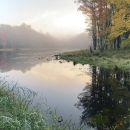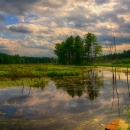About Us
Nantucket National Wildlife Refuge is one of eight national wildlife refuges that comprise the Eastern Massachusetts National Wildlife Refuge Complex. This refuge is located at the very tip of the Coskata-Coatue Peninsula, in an area known as Great Point on Nantucket Island, Massachusetts. Nantucket was originally inhabited by the Wampanoag Tribe. The U.S. Fish and Wildlife Service acquired the land for the refuge in 1973 from the U.S. Coast Guard, who still manages the small acre that the Great Point Lighthouse sits upon, in the middle of the refuge.
Within Coskata-Coatue, there lies an extremely diverse assemblage of habitats including barrier beach dunes and intertidal areas and though we focus on Nantucket National Wildlife Refuge, we must incorporate discussion of these lands as well to provide the appropriate landscape context. The refuge is home to many wildlife species such as marine mammals including grey and harbor seals, numerous shorebirds such as piper plovers and American oystercatchers, various seabirds including multiple tern species and gulls, waterfowl, songbirds, and raptors.
Our Mission
Vision
Nantucket National Wildlife Refuge, though diminutive in size, is an important part of a larger area aptly named Great Point. It has great value to the wildlife that uses its beaches, from coastal birds including piping plovers and terns, to mammals including gray seals. Situated at the tip of a peninsula, it is surrounded by a diverse assemblage of coastal, intertidal, wetland, and marine habitat, attracting a great diversity of fauna. It will continue to be managed as a special place for breeding, wintering, and migratory wildlife.
We continue to provide opportunities for quality, compatible, wildlife-dependent experiences by the public. Nantucket National Wildlife Refuge is recognized internationally as a premier fishing location, and the presence of its lighthouse provides the public with a destination that offers cultural perspective and panoramic views. Through strong partnerships, we will promote ecologically responsible use of the property, and continue to promote public awareness about the intrinsic value of dynamic coastal ecosystems.
Refuge Purpose(s)
Each unit of the National Wildlife Refuge System is established to serve a statutory purpose that targets the conservation of native species dependent on its lands and waters. All activities on those acres are reviewed for compatibility with this statutory purpose.
Nantucket National Wildlife Refuge’s purpose is its “. . . particular value in carrying out the national migratory bird management program.” (16 U.S.C. § 667b-d, as amended)
Our History
The Early Archaic Period (9,000 to 7,000 BP): Archaeological sites found on Cape Cod and Nantucket. Data suggest that Indigenous peoples of the Wampanoag Tribe, utilized a hunter-gatherer strategy throughout the region, using a combination of fishing, shell-fishing, and hunting with a moderate use of horticulture.
1973: The U.S. Fish and Wildlife Service acquired the refuge land from the U.S. Coast Guard.
March 29, 1984: Great Point Lighthouse was destroyed in a winter storm.
September 6, 1986: Great Point lighthouse replacement was created.
Other Facilities in this Complex
Situated along the Atlantic Flyway in Massachusetts, the Eastern Massachusetts National Wildlife Refuge Complex is comprised of eight ecologically diverse refuges. The eight individual refuges include inland and coastal wetlands, forests, grasslands, and barrier beaches that provide important habitat for migratory birds, mammals, plants, reptiles and amphibians.
Complex headquarters is located at Assabet River National Wildlife Refuge, 680 Hudson Road, Sudbury, MA, 01776. Phone: (978) 443-4661.



